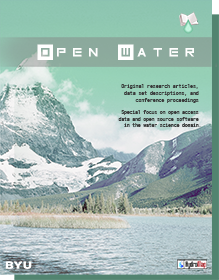Article Title
Large-Scale Flood Inundation Modeling in Data Sparse Environments using TanDEM-X Terrain Data
Keywords
global-scale, flood mapping, flood impact assessment, natural hazards
Abstract
This paper demonstrates a workflow used by the U.S. Army Coastal and Hydraulics Laboratory to quickly generate high-resolution flood inundation maps nearly anywhere in the world. Previous research illustrates that hindcast and forecast streamflow for nearly any river/stream in the world is possible by combining global runoff datasets from land surface models (LSMs) with hydrography datasets from hydrologically corrected global elevation datasets. Recent research has also shown that flood inundation estimates are possible through combining resulting streamflow estimates with high-resolution terrain and land cover data. This paper provides a detailed workflow of how near global flood inundation maps runoff data are generated using the HRES/LAND LSM data from the European Center for Medium Range Weather Forecasts; hydrography datasets from the Shuttle Elevation Derivatives at multiple Scales as well as derived from the World Wildlife Federation terrain data; Visual Navigation (VISNAV) land cover data; and the newly-collected TerraSAR-X add-on for Digital Elevation Measurements (TanDEM-X) digital elevation model (DEM) datasets. This current research discusses the inputs and outputs for this flood modeling methodology, limitations, and provides an example for Typhoon Lionrock that hit North Korea in late August 2016.
BYU ScholarsArchive Citation
Gutenson, Joseph L.; Follum, Michael L.; Snow, Alan D.; and Wahl, Mark D.
(2017)
"Large-Scale Flood Inundation Modeling in Data Sparse Environments using TanDEM-X Terrain Data,"
Open Water Journal: Vol. 4:
Iss.
2, Article 4.
Available at:
https://scholarsarchive.byu.edu/openwater/vol4/iss2/4
